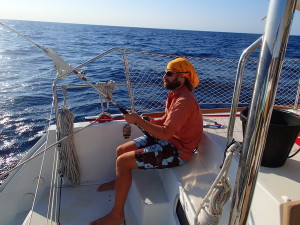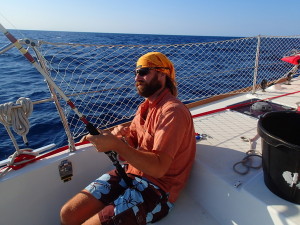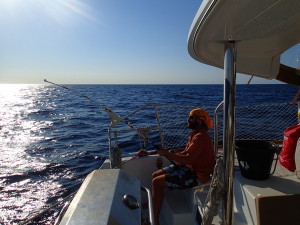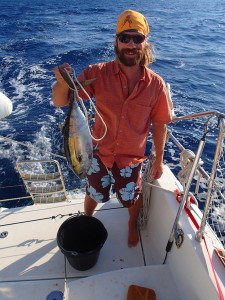We left St Augustine, FL headed to Beaufort, NC. Beaufort is one of our favorite places and we were excited to return. We were at sea about 3 days which was the longest it’s just been the two of us out there. Luckily it was a nice sail and we easily fell into our routine of two hours on and two hours off. That works best for us. While one of us is on watch the other will sleep in the cockpit or just be puttering around the salon. Stanley is usually sleeping somewhere!
New to sailing? Let us help you master the basics with these handy sailing tips and instructions for beginners. You can also read our sailboat buying guide and watch videos on sailing, plus compare sailboat brands to find the right one for you. Both novice and experienced sailors alike can benefit from a quick review of these beginner sailing basics, including taking the right instruments, like nautical clocks, barometers and more.
Choose calm, uncrowded waters If you’re just starting to master sailing basics and learn how to sail, then one of the most important beginner sailing tips to remember is to practice in ideal conditions of light winds and low traffic.
Choose a small boat to learn how to sail It’s easier to learn how to sail with fewer lines and sails. A small dinghy will be more responsive and easier to maneuver, and is also perfect for practicing test capsizes in (see tip #7 below).
Begin on a boat rigged with one sail Similar to the above, beginning on a boat that’s rigged with just one sail will make learning sailing basics easier and less complicated.
Follow sailing basics for safety There are certain sailing basics for safe boating that should go without saying, no matter what your level of expertise. These include always telling someone before you go out on the water, always bringing a floatation device and knowing in advance how to swim. For additional information, please see our safe boating pages.
Research tide, wind and weather conditions. Check the weather forecast so you can be prepared for whatever the weather might bring. Be sure to bring along adequate provisions, clothing and basic weather gear as needed. Boating and sailing basics means always being prepared.
Become familiar with sail control The best sailors are the ones who are able to adjust sail settings to take the best advantage of different wind and water conditions. In general, sails should be relatively flat when the wind is either very light or very strong, and full when there is a moderate wind.
Capsize on purpose. This may seem like one of the oddest beginner sailing tips we could suggest, but it’s better to practice how to handle a capsized sailboat within a controlled environment, as opposed to an uncontrolled one. We learn best from experience, and the valuable sailing basics you’ll pick up from going through a test-capsize in a small dinghy will serve you well in the event of a real-life one.
Here is Stanley enjoying the sail.
A beautiful sunset.
On the second day we caught a tuna! Yes!!







